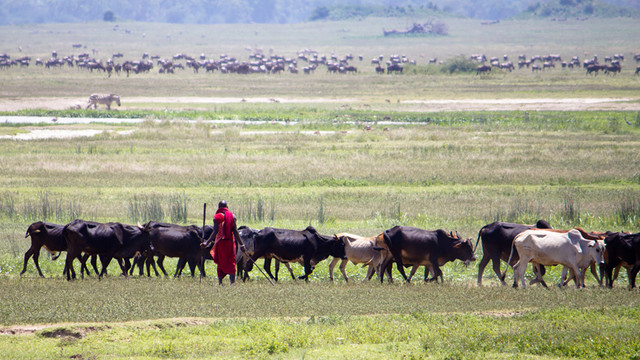Guide for linking sovereign debt to climate and nature action supports decision-makers to restructure debt in response to COVID-19 and the Ukraine war
A recent ‘how-to’ guide on debt instruments for debt managers and environmental decision-makers in developing countries has now been made more widely available with translations in Arabic and Mandarin.

A local forest ranger patrols the rain forests and wild coffee plantations in Central Java Country, Indonesia (Photo Dhana Kencana/Climate Visuals Countdown)
Since 2020, IIED has been working to encourage creditors and receiving countries take up climate and nature debt instruments – to tackle the debt, climate change and nature emergencies together, and to ensure an inclusive and sustainable recovery in the face of COVID-19 and the Ukraine war.
Several papers have been produced as part of this research, including a ‘how-to’ guide that provides governments from the least developed countries (LDC) with an actionable plan for using new debt instruments designed to create fiscal space and achieve climate and nature outcomes.
This guide outlines innovations and provides useful information for governments seeking to achieve climate and nature outcomes while simultaneously strengthening their sovereign balance sheets.
With the support of the United Nations Commission for Western Asia (UNESCWA), the guide has now been translated into Arabic, and with the support of the China Council for International Cooperation for Environment and Development (CCICED), also translated into Mandarin.
IIED chief economist Paul Steele said: “The guide has already proved to be a really valuable asset for developing country debt managers including in Cabo Verde and Lao PDR.”
Tackling debt and climate change simultaneously is essential for countries in the global South, as recent research from IIED shows that five of the top ten countries most at risk from climate change-related disasters are either already in debt distress or at high risk of becoming so.
“Having it available in further languages will help us take that message to new audiences, including China as the main bilateral creditor and Saudi Arabia and the Gulf States as other important creditors,” added Steele.
Debtors and creditors requiring more information on the how-to guide and the practical steps that it offers for indebted countries to take, can also watch two new edited recordings of high-level events from last year’s COP26.
At the Resilience Hub, ‘Debt swaps for climate and nature: a strategic approach to urgent global goals’ features a high-level dialogue between debtor governments and creditors to reach political commitments for more large scale, programmatic debt swaps for climate and nature.
And from the 2021 Development & Climate Days, emerging approaches to address the debt, climate and nature triple crisis, why they are needed and what lessons are being learned, alongside the roles of different actors in these approaches, are explored in ‘How can climate-vulnerable countries benefit from debt instruments for climate and nature?.
Contact
Paul Steele, chief economist, IIED’s Shaping Sustainable Markets research group




